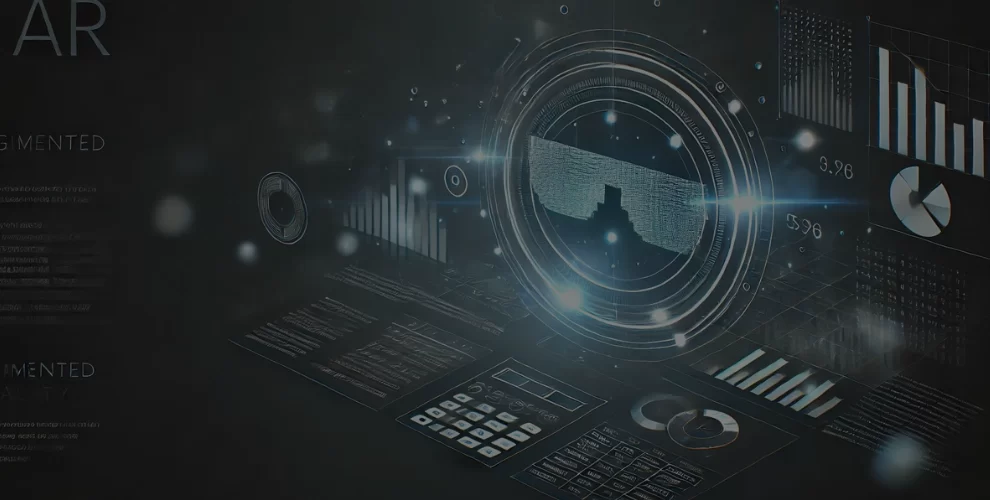
Why AR (Augmented Reality) is Transforming Accounting Practices
Table of Contents
Introduction
Welcome to WikiGlitz! Augmented Reality (AR) is no longer confined to gaming and entertainment; it’s making significant strides in transforming accounting practices.
This technology enhances accuracy, efficiency, and data visualization in the accounting field. Let’s explore how AR is being integrated into accounting and why it is becoming a game-changer.
WikiGlitz has brought this insight to keep you informed about the latest in technology.
Key Takeaways
- Enhanced Accuracy:AR helps in maintaining accuracy by overlaying real-time data onto actual documents, reducing errors during auditing and compliance monitoring.
- Increased Efficiency:By streamlining financial processes and providing real-time information, AR significantly boosts the efficiency of accounting professionals.
- Improved Data Visualization:AR provides interactive 3D representations of financial data, making it easier to identify trends, anomalies, and opportunities.
The Integration of AR in Accounting
Real-Time Data Overlay
AR allows accounting professionals to overlay digital information onto physical documents and objects in real time.
This integration helps in maintaining accuracy and reducing errors by providing immediate access to relevant data.
For example, during an audit, AR can highlight discrepancies and ensure compliance with regulations by superimposing current financial data over actual records.
Interactive 3D Data Visualization
One of the most significant benefits of AR in accounting is its ability to create interactive 3D representations of financial data.
This feature enables accountants to visualize complex data sets more effectively, identify trends and anomalies quickly, and present financial information in a more engaging and comprehensible manner.
Enhanced Training and Simulation
AR provides immersive training experiences for accounting professionals. Virtual tutorials, narrated instructions, and interactive simulations help in enhancing skills and knowledge.
These training modules can simulate real-world scenarios, allowing accountants to practice and perfect their techniques in a risk-free environment.
Benefits of AR in Accounting
Improved Accuracy and Compliance
By overlaying real-time data on physical documents, AR minimizes errors and ensures accuracy in financial reporting.
It also aids in compliance monitoring by providing up-to-date information on regulatory changes and highlighting areas of non-compliance.
Increased Efficiency in Financial Processes
AR streamlines various financial processes, such as auditing, budgeting, and forecasting, by providing real-time information and reducing the time required for data entry and verification.
This increased efficiency allows accounting professionals to focus on more strategic tasks.
Better Client Engagement
AR enables accountants to provide clients with immersive financial experiences. For example, clients can visualize their financial data through AR projections, making it easier to understand their financial status and make informed decisions.
This improved engagement leads to higher client satisfaction and trust.
Cost Savings
By reducing errors and increasing efficiency, AR can lead to significant cost savings for accounting firms.
Fewer mistakes mean fewer resources spent on correcting them, and streamlined processes translate to lower operational costs.
Challenges and Considerations
Technological Barriers
The integration of AR into accounting practices requires significant investment in technology and training.
Accounting firms need to ensure that their staff is adequately trained to use AR tools effectively. Additionally, the cost of AR devices and software can be prohibitive for smaller firms.
Data Security
Accounting firms must implement robust security measures to protect sensitive financial information from cyber threats.
Resistance to Change
As with any technological advancement, there may be resistance to change from accounting professionals who are accustomed to traditional methods.
Firms need to foster a culture of innovation and provide adequate support to ease the transition.
Future Trends in AR for Accounting
AI Integration
The integration of artificial intelligence (AI) with AR is set to revolutionize accounting practices further.
AI can enhance AR applications by providing predictive analytics, automating routine tasks, and offering deeper insights into financial data.
Expansion into New Areas
As AR technology becomes more advanced and accessible, its applications in accounting will expand.
Future trends may include more sophisticated financial modeling, real-time collaboration with clients and colleagues in virtual environments, and the use of AR in forensic accounting.
Increased Adoption
As the benefits of AR become more apparent, more accounting firms will adopt this technology.
Increased competition among AR technology providers will likely lead to more affordable and user-friendly solutions, making it easier for firms of all sizes to integrate AR into their practices.
Conclusion
WikiGlitz has brought you this comprehensive guide on how AR is transforming accounting practices.
From improving accuracy and efficiency to enhancing data visualization and client engagement, AR is proving to be a valuable tool in the accounting field.
As technology continues to advance, the integration of AR in accounting is expected to grow, offering even more benefits and opportunities. Stay tuned to WikiGlitz for more insights into the exciting world of augmented reality.
FAQs
How does AR improve accuracy in accounting?
AR overlays real-time data on physical documents, reducing errors and ensuring accuracy in financial reporting and auditing.
What are the benefits of AR in financial data visualization?
AR creates interactive 3D representations of financial data, making it easier to identify trends, anomalies, and opportunities, and presenting data in a more engaging way.
How can AR enhance client engagement in accounting?
AR allows clients to visualize their financial data through immersive experiences, making it easier to understand their financial status and make informed decisions.
What challenges do accounting firms face in integrating AR?
Challenges include technological barriers, high costs, data security concerns, and resistance to change from professionals accustomed to traditional methods.
What is the future of AR in accounting?
The future includes AI integration, expansion into new areas such as forensic accounting, and increased adoption as AR technology becomes more advanced and accessible.
Want to keep up with our blog?
Our most valuable tips right inside your inbox, once per month.
Error: Contact form not found.
WikiGlitz Team
Welcome to WikiGlitz, your ultimate destination for tech insights and innovation. Our expert team is dedicated to delivering free resources and professional advice on various technology topics, including Artificial Intelligence, Cyber Security, Cloud Computing, and more. We strive to empower our readers with up-to-date information and practical guidance, ensuring you stay ahead in the rapidly evolving tech landscape. At WikiGlitz, we are passionate about making complex technology accessible to everyone. Our team of seasoned experts curates content that is both informative and engaging, helping you understand and leverage the latest tech trends. Whether you're a tech enthusiast or a professional, WikiGlitz is your go-to source for reliable, expert-driven content. Join us on this journey to explore and embrace the future of technology.





